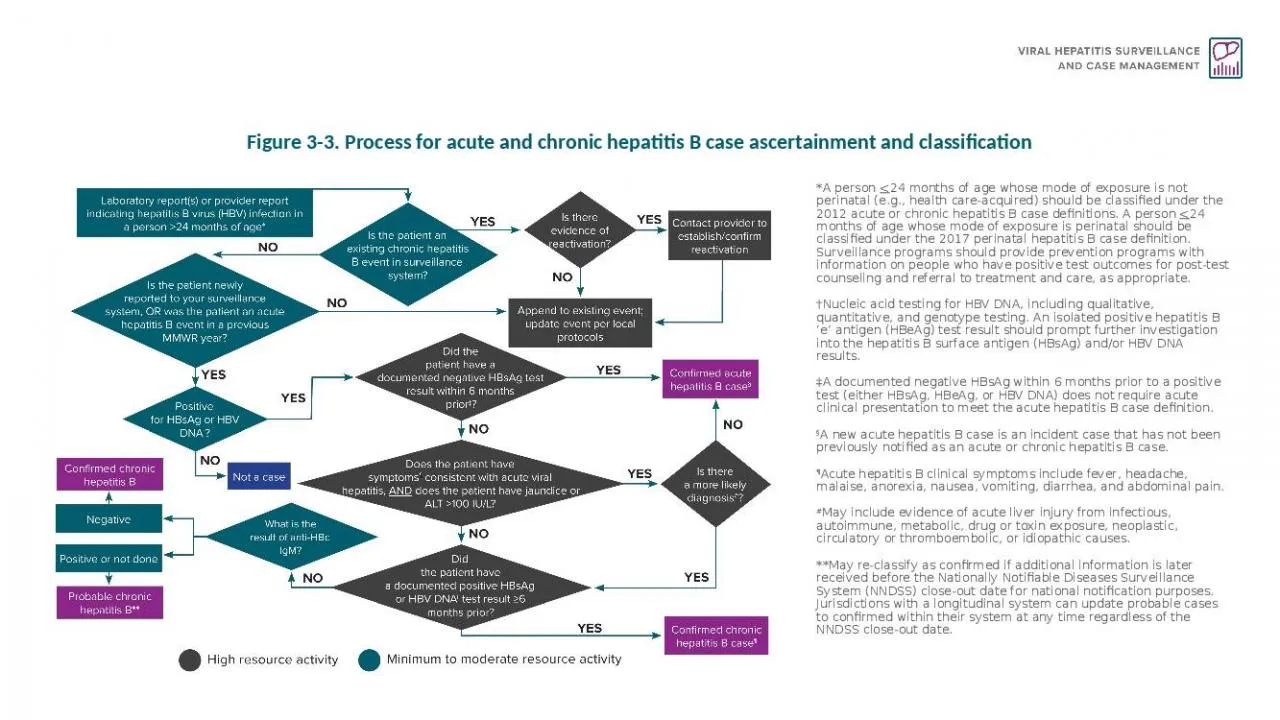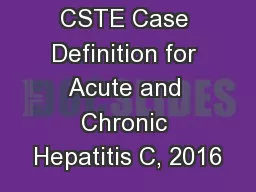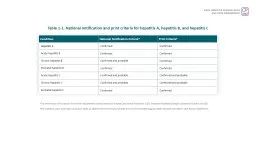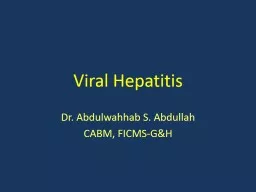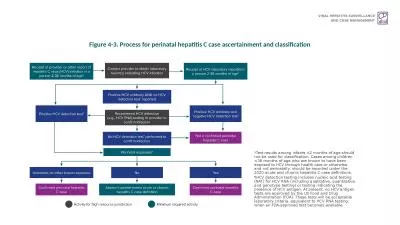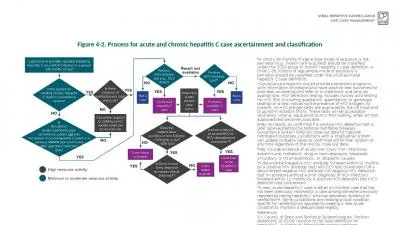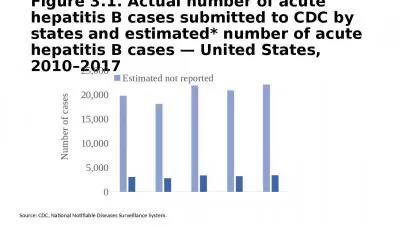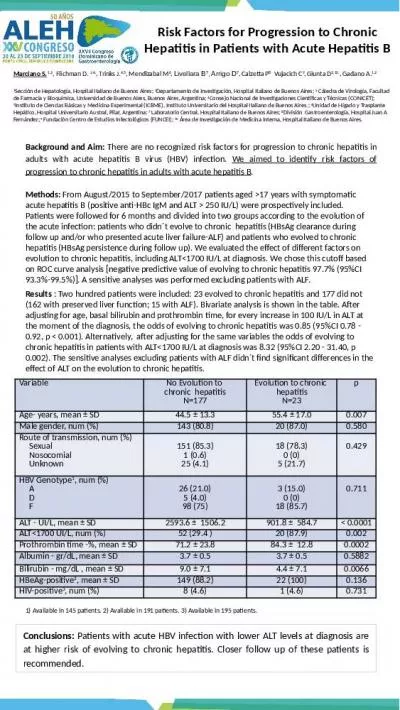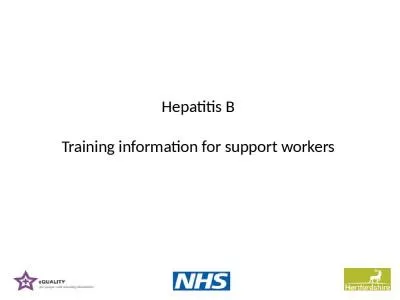PPT-Figure 3-3. Process for acute and chronic hepatitis B case ascertainment and classification
Author : leah | Published Date : 2022-02-16
A person lt 24 months of age whose mode of exposure is not perinatal eg health careacquired should be classified under the 2012 acute or chronic hepatitis B case
Presentation Embed Code
Download Presentation
Download Presentation The PPT/PDF document "Figure 3-3. Process for acute and chroni..." is the property of its rightful owner. Permission is granted to download and print the materials on this website for personal, non-commercial use only, and to display it on your personal computer provided you do not modify the materials and that you retain all copyright notices contained in the materials. By downloading content from our website, you accept the terms of this agreement.
Figure 3-3. Process for acute and chronic hepatitis B case ascertainment and classification: Transcript
Download Rules Of Document
"Figure 3-3. Process for acute and chronic hepatitis B case ascertainment and classification"The content belongs to its owner. You may download and print it for personal use, without modification, and keep all copyright notices. By downloading, you agree to these terms.
Related Documents

